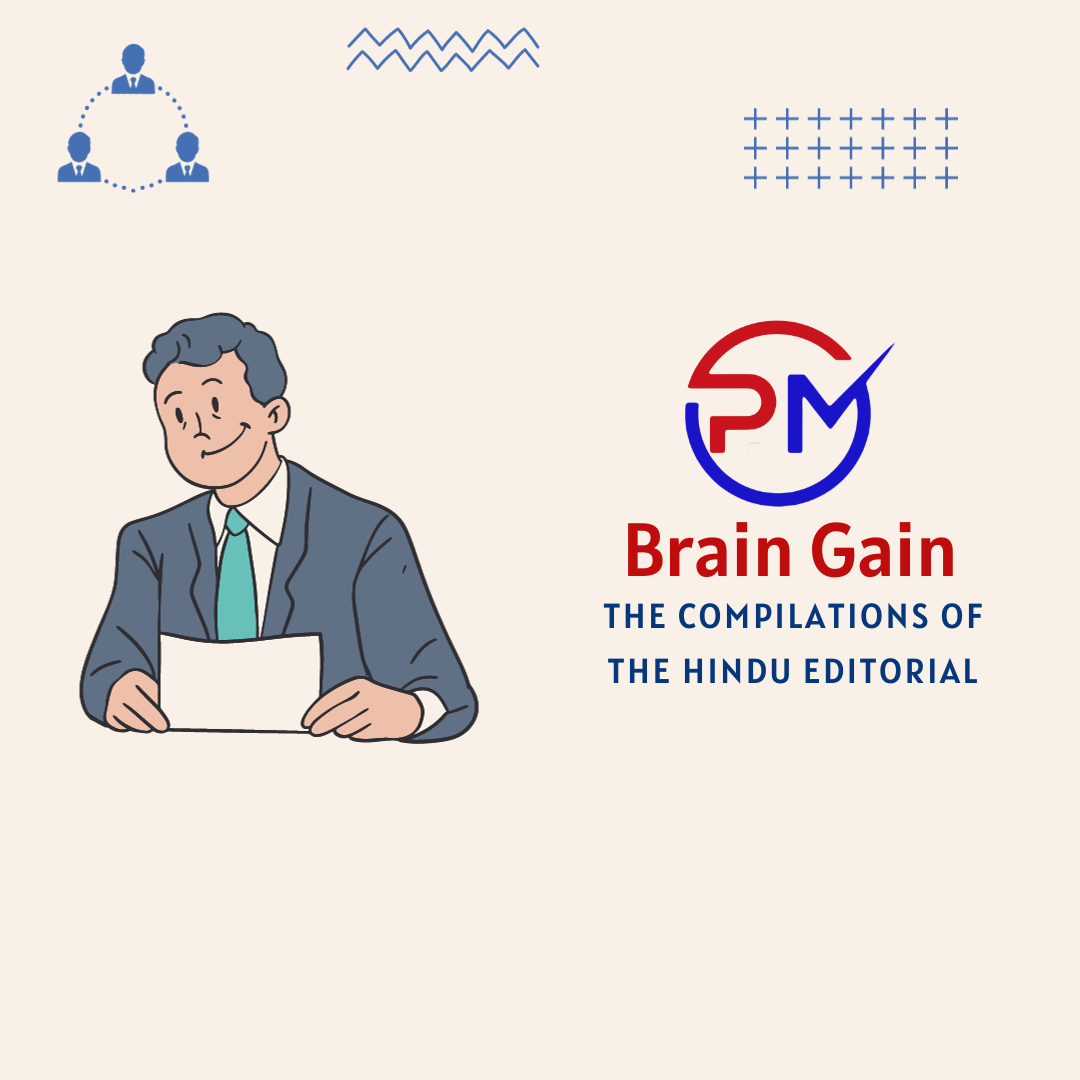Editorial 1 : Growth dichotomy
Context: Slowdown in industrial output growth shows low consumer confidence
Introduction
- In September, the Index of Industrial Production or IIP rose 5.8%, almost half the 14-month-high 10.3% growth in August.
- Most economists anticipated a 7% to 8% uptick in the month that marks the onset of India’s packed festive calendar.
- September’s factory output growth was the slowest in three months, but also marked a 2.4% drop in production levels compared to August.
| Index of Industrial Production (IIP)Index of Industrial Production data or IIP as it is commonly called is an index that tracks manufacturing activity in different sectors of an economy.The IIP number measures the industrial production for the period under review, usually a month, as against the reference period. IIP is a key economic indicator of the manufacturing sector of the economy.There is a lag of six weeks in the publication of the IIP index data after the reference month ends. IIP index is currently calculated using 2011-2012 as the base year.In the case of Index of Industrial Production India, IIP data is compiled and published by CSO every month. CSO or Central Statistical Organisation operates under the Ministry of Statistics and Programme Implementation (MoSPI). The IIP index data, once released, is also available on the PIB website. |
What is more worrying!
- In August, just seven of 23 manufacturing sectors had clocked a contraction but that list expanded to nine in September, with furniture dropping 20% and apparel production almost 18%.
- What is more worrying is that 12 sectors recorded a sequential decline in output this September, belying hopes that firms would ramp up inventories in anticipation of festive spending. Producers’ lack of confidence in consumers’ impulses is reflected in consumer durables and non-durables, which were up just 1% and 2.7%, respectively, on top of a 5.5%-plus contraction last September.
- Sequentially, consumer non-durables, what one may broadly consider as fast-moving consumer goods involving smaller-ticket spends, were down 3.5% with the lowest output levels seen since November 2022. Electricity generation also fell 6.6% sequentially in September, perhaps due to the higher rainfall recorded over August.
Looking at the broader picture
- On the whole, September’s IIP takes average factory output growth to 7.4% in the second quarter, lifting the uptick in the first half of 2023-24 to 6%.
- This may still weigh in well with the central bank chief’s hopes of Q2 GDP growth outpacing their official projection of 6.5%. But spliced up, the IIP indicates an asymmetry in the economy and a fresh fork lies in the road ahead.
- Consumer goods’ output was just 0.3% higher than pre-COVID-19 levels this September, with durables being the only use-based segment to record a contraction so far this year. By contrast, output has been more resilient in investment-linked sectors such as infrastructure/construction goods and capital goods, up 12.1% and 6.7%, respectively, this year.
- Public capex on infrastructure sectors has surely lifted output of items such as steel and cement through the first half of the year, while high inflation has eaten into all but the high-income consumers’ propensity to spend.
Way forward
- Going forward, capex spends that have been front-loaded this year may moderate and additional revenue spends ahead of the Lok Sabha election are likely, especially with sensitive commodities such as fuel, urea and food facing fresh volatility in prices.
- That infrastructure and construction goods’ output in September was the lowest since March 2023, suggests one growth tide may be ebbing, which makes the other, more fragile consumption story even more critical to watch.
Editorial 2 : Remission of diabetes, desirable, but not essential
Context: It may not be possible to make India ‘diabetes free’, but a ‘diabetes complications free India’ is within reach.
Introduction
- The concept of a reversal of diabetes has become very popular recently. Several commercial organisations have jumped on the bandwagon of a ‘reversal of diabetes’ and are making tall claims. Therefore, it is important to consider the pros and cons of a reversal of diabetes.
| DiabetesDiabetes is a chronic disease that occurs either when the pancreas does not produce enough insulin or when the body cannot effectively use the insulin it produces.Insulin is a hormone that regulates blood glucose. Hyperglycaemia, also called raised blood glucose or raised blood sugar, is a common effect of uncontrolled diabetes and over time leads to serious damage to many of the body’s systems, especially the nerves and blood vessels.Type 1 diabetesType 1 diabetes (previously known as insulin-dependent, juvenile or childhood-onset) is characterized by deficient insulin production and requires daily administration of insulin. In 2017 there were 9 million people with type 1 diabetes; the majority of them live in high-income countries. Neither its cause nor the means to prevent it are known.Type 2 diabetesType 2 diabetes affects how your body uses sugar (glucose) for energy. It stops the body from using insulin properly, which can lead to high levels of blood sugar if not treated.Over time, type 2 diabetes can cause serious damage to the body, especially nerves and blood vessels.Type 2 diabetes is often preventable. Factors that contribute to developing type 2 diabetes include being overweight, not getting enough exercise, and genetics. |
‘Remission’ of diabetes
- First, the term ‘reversal’ of diabetes is scientifically incorrect; the appropriate term is ‘remission’ of diabetes. Reversal implies that the condition has permanently reverted to normal and a cure has been achieved. ‘Remission’ implies that diabetes has only gone away temporarily. We know for instance that cancer can go into remission, but can come back in a more virulent form.
Remission and type 2 diabetes
- Diabetes is not a single condition but consists of several types. When we talk of remission of diabetes, we are referring most often to type 2 diabetes. However, there are other forms of diabetes such as type 1 diabetes where long-term remission is very unlikely to occur.
- There are certain individuals with type 2 diabetes who are more likely to achieve remission. This can be identified by the letters ABCDE.
- A refers to A1c (glycated haemoglobin) which should not be very high;
- B refers to Body Mass Index (BMI) or body weight. If it is high, you are more likely to achieve remission due to weight loss;
- C stands for C-Peptide, a measure of insulin secretion. If it is good, you can achieve remission more easily;
- D stands for Duration of diabetes; the shorter the duration, the greater the chances of remission; and
- E stands for an Enthusiastic individual who is keen to achieve remission.
Good Legacy Effect
- One should remember that even if one achieves remission of diabetes only for a few months or years, it is still worthwhile because it leads to a good ‘legacy effect’ which provides protection from complications caused by diabetes.
Data on India
- According to our recent Indian Council of Medical Research–India Diabetes (ICMR-INDIAB) study, there are currently 101 million people with diabetes and 136 million people with prediabetes in India.
- In those with prediabetes, preventing the majority of these individuals from developing diabetes for a considerable number of years is possible with just lifestyle modifications.
- In those who already have diabetes, we should, of course, try to achieve remission of diabetes. But if this is not possible, meeting the ABCD guidelines of the treatment of diabetes will ensure that they can all live a long and healthy life without any diabetes-linked complications.
Conclusion
- Even though we may not be able to make India ‘diabetes free’, my dream is that we can at least have a ‘diabetes complications-free India’. On the occasion of World Diabetes Day (November 14), let us rededicate ourselves to achieve this dream.


